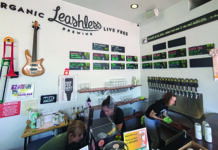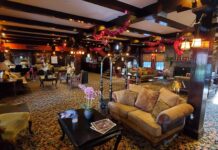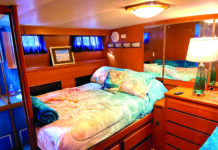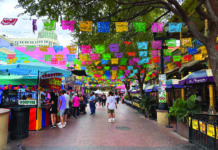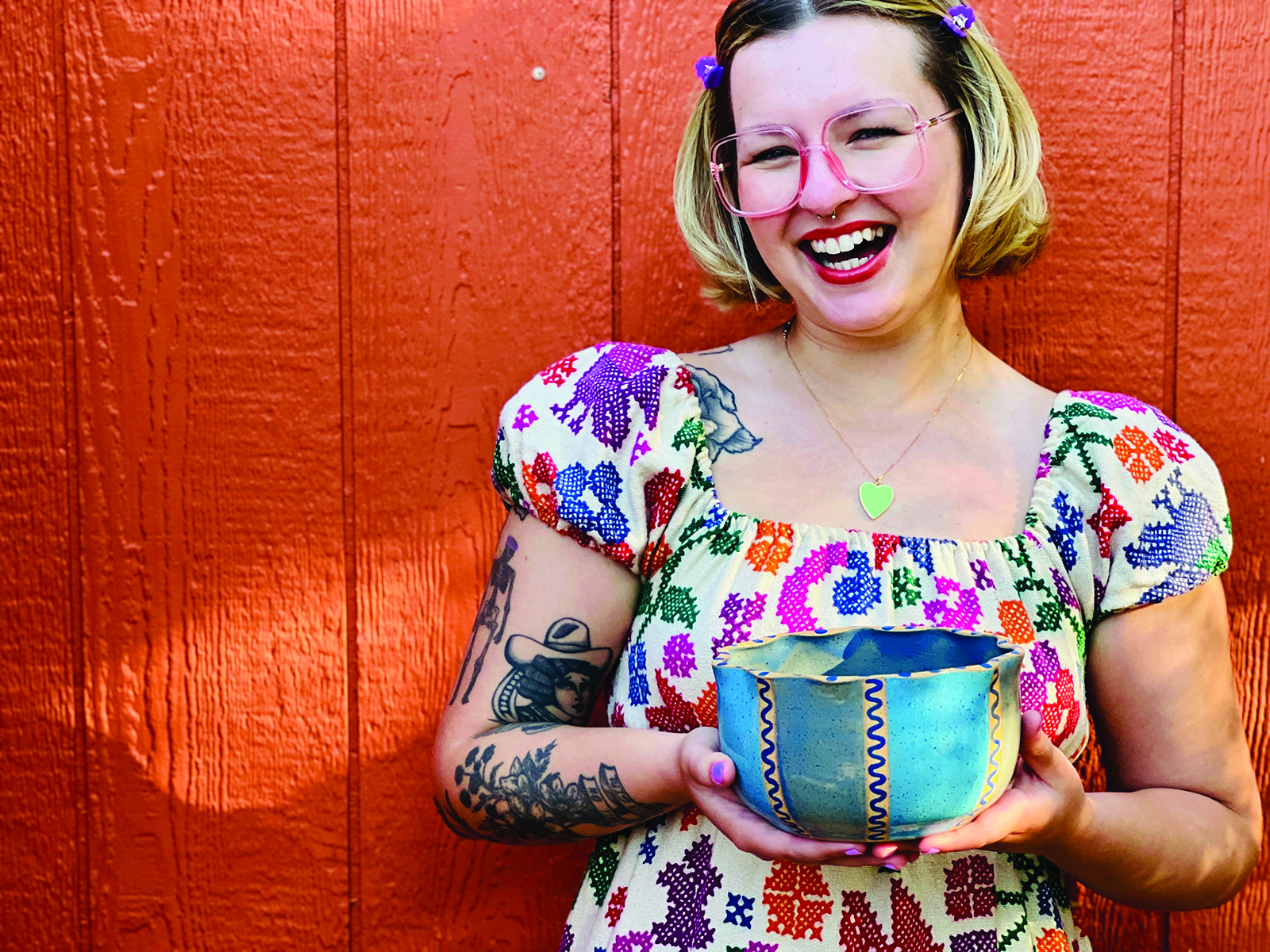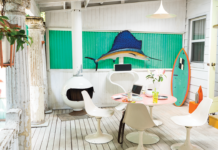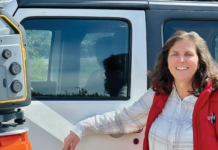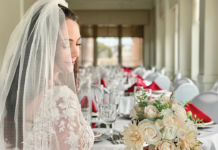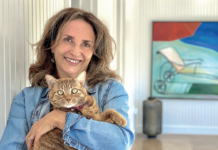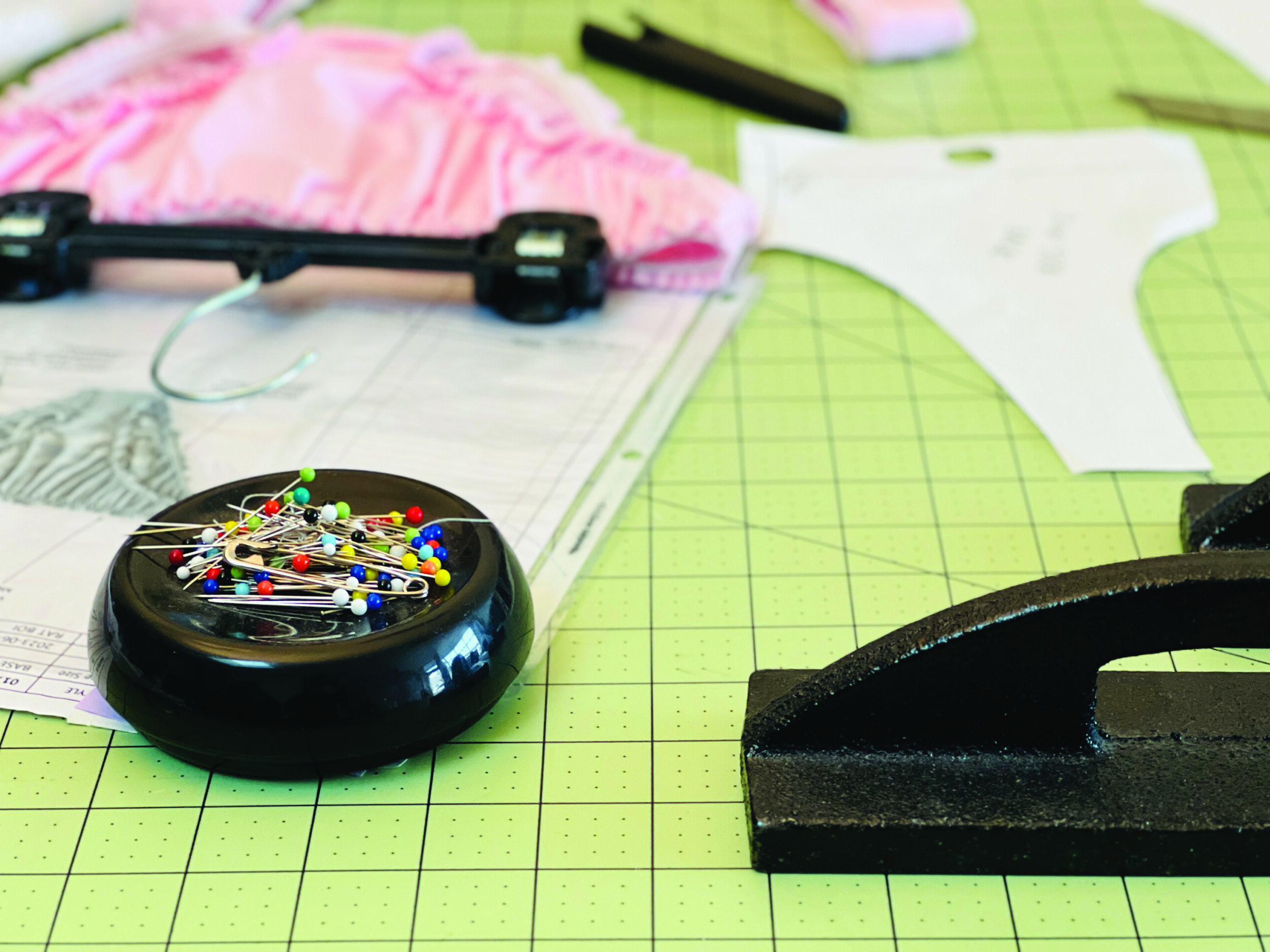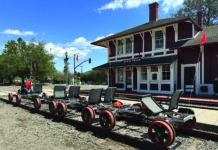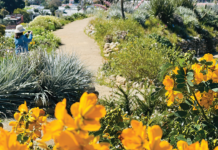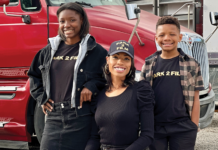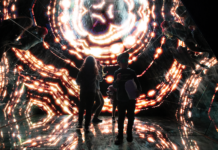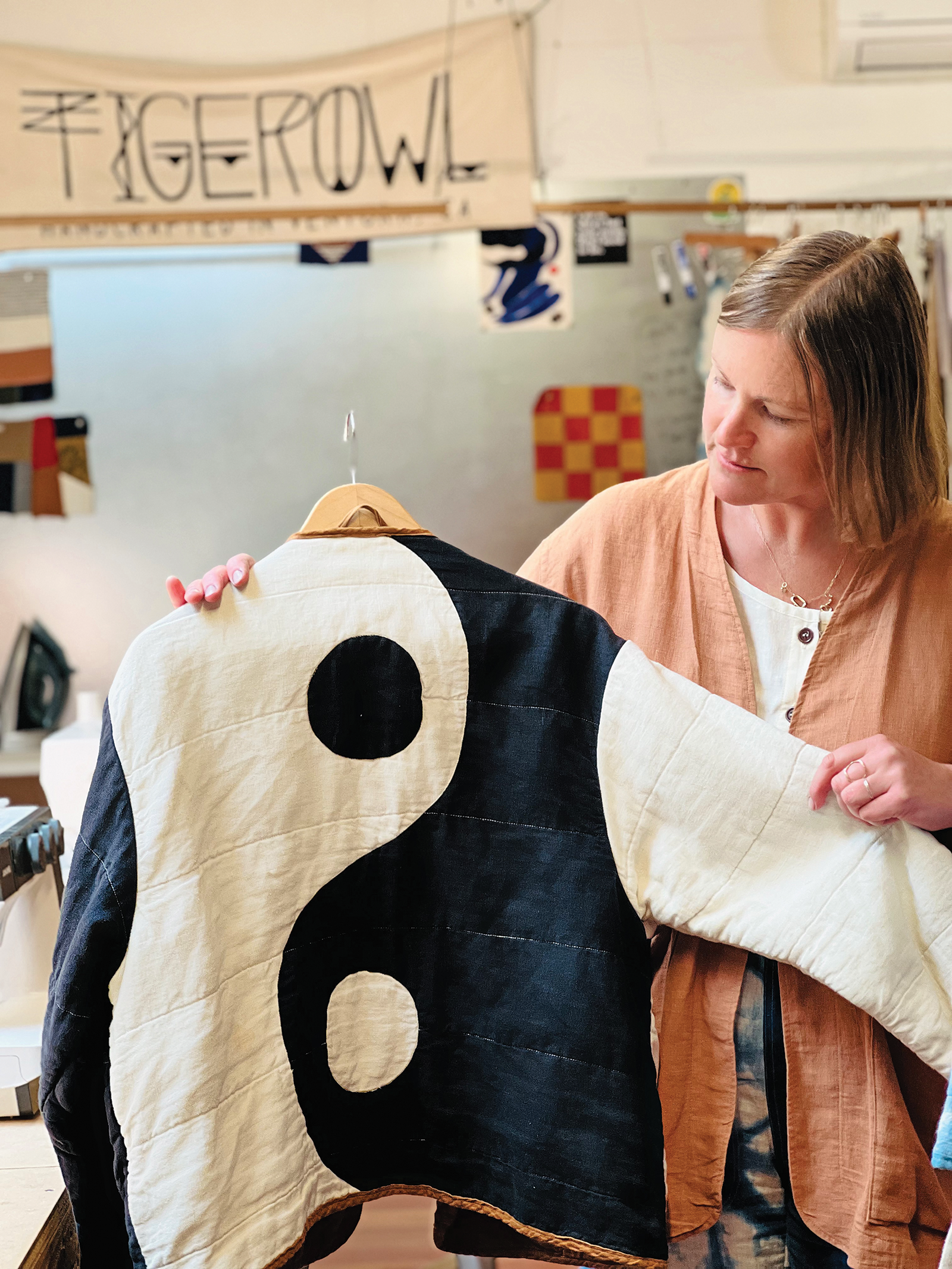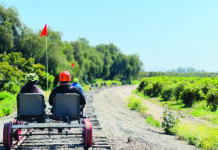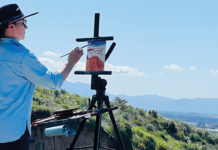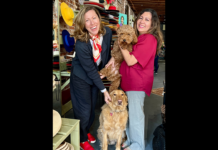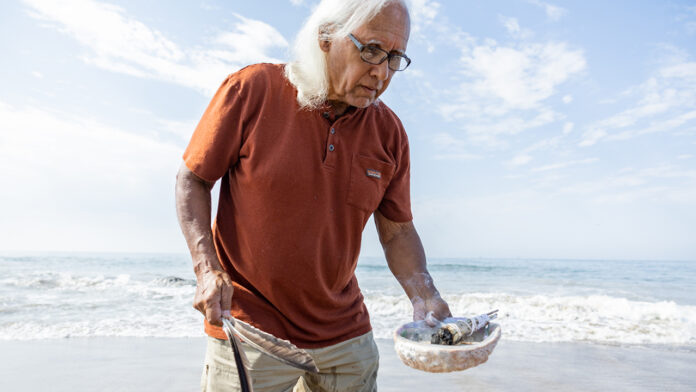
Alan Salazar discusses his Native ancestry, discovering lost knowledge and teaching tomol craftsmanship to a new generation of Chumash.
By Nancy D. Lackey Shaffer
For 25 years, Alan Salazar — storyteller, Native educator and tribal elder in the Fernandeño Tataviam Band of Mission Indians — has been building traditional plank canoes that the Chumash call tomols. These large “Houses of the Sea” measuring up to 30 feet were paddled throughout the Channel Islands and between the mainland and the islands more than 2,000 years ago, and were an integral part of Chumash culture. Tomols facilitated the development of a vast trading network that existed between Southern California’s Indigenous people from Morro Bay to Long Beach, and gave rise to a prestigious class in Chumash society known as the Brotherhood of the Tomol. Some anthropologists have even described the tomol as “the single most technologically complex watercraft built in North America.”
European colonization, forced assimilation and enslavement led to the loss of much Indigenous knowledge, including the art of tomol building — which ceased altogether around 1830. But thanks to the ingenuity, dedication and research of intrepid tribal members like Salazar, that knowledge has been revived and preserved for today’s and tomorrow’s generations. His efforts have recently been documented in the story “Home to Limuw,” published by outdoor clothing company Patagonia, and in the Patagonia Films documentary Chumash Powered, directed by Ben-Alex Dupris, a member of the Colville Confederated Tribes, and scheduled to be screened in Ventura on June 15.
Salazar was kind enough to take time out of his vacation in France to answer some questions by phone for Ventana Monthly, where he discussed growing up in San Fernando, researching his Indigenous history, paddling across Santa Barbara Channel by tomol and more.
Note: This interview has been edited and condensed for space and clarity.
VENTANA MONTHLY: Where did you grow up?
ALAN SALAZAR: I was born in San Fernando, California — it’s where my family that has the Chumash and Tataviam ancestry come from, because my ancestors were taken to the San Fernando Mission starting in 1799. But then when I was 2 we moved up to Hanford… I grew up as a young boy in Hanford and Bakersfield… I moved to Ventura in 1995.
What brought you here?
The short story is, I was having dinner with a dear friend of mine. After several glasses of wine, we got to talking about where we wanted to live. I always loved Ventura, it’s close to my family, part of my tribal homeland…and it just kind of clicked. … Two weeks later, I was living in Ventura right on the beach just down from the pier.
Tell us a little bit about your career as a storyteller.
I went to high school in Bakersfield — I’m a proud Foothill Trojan — then Bakersfield Junior College. I always thought I’d go into construction like my father and my uncles…but I actually started teaching preschool. … I went from teaching preschool to working in juvenile institutions in Bakersfield and Santa Barbara…I retired from Kern County in early 2000s and Santa Barbara County in 2007.
When I left Bakersfield and moved to Ventura, that’s when I started doing storytelling programs…. The research I did on my own to learn about my tribes. Self taught, kind of the old traditional way: some reading, lots of just asking knowledgeable people a lot of questions. Tribal elders, Tony Romero, Mr. [Vincent] Tumamait…anthropologists, archeologists, historians, family members…just reading and researching everything I could get my hands on. Which really wasn’t a lot, especially in the late 1900s and early 2000s. I’m self educated.
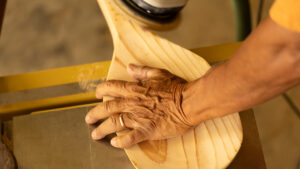
Can you describe your tribal affiliation?
I am a tribal member of the Fernandeño Tataviam Band of Mission Indians. There were three groups of tribal people brought to the San Fernando Mission. To the north of the mission — that was Tataviam territory. West of the mission, around Simi Valley, that was the Ventureño Chumash. And to the south, that was Tongva territory. There was lots of intermarriage. Most of our tribal members have Tongva, Chumash and Tataviam heritage.
Growing up, were you aware of your heritage and culture?
Yes and no. My father was unique. He was a marine and fought in World War II. He was born in San Fernando and lived his whole life in San Fernando . . . and there was a very strong Native community still living around the San Fernando Mission. Several families brought to the San Fernando Mission were still living in the area….on my birth certificate it says Indian. That was very unusual for that time.
We were Mission Indians. That was the term that was used. … To learn about your tribal history, it was extremely difficult. The Fernandeño Tataviam band, the Ventureño band [and other bands] are federally non-recognized tribes. It’s extremely difficult to hold onto that tribal history. It’s been a real struggle.
In the early 1990s…my aunt and I researched [where our villages were]. It was detective work. It’s not easy being Native in America. There’s obstacles, there’s resentment. I’ve been called every derogatory name . . . Racist Americans are not the most intelligent…they’re not the sharpest tools in the shed.
When did you get involved with the creation of tomols?
I remember very clearly: It was around 1996-97. I was doing a few things at the Santa Barbara Museum of Natural History. My aunt was actively involved with the museum. They reached out to the Chumash native community in Southern California to help them try and revitalize their language and their culture. Dr. John R. Johnson [Curator of Anthropology at the Santa Barbara Museum of Natural History] reached out to me one day and asked if I’d be interested in building some traditional canoes. … A local nonprofit got a grant to build three traditional Chumash plank canoes. One was for the schools, one was for the Santa Barbara Maritime Museum and one was going to be for the Chumash people
Peter Howorth was in charge of the construction. Peter is just a wonderful man. He oversaw the construction of at least a half dozen tomols. And he’s going to help us start building another one this weekend [June 10-11] in Ventura.
Did you do other traditional crafts?
I tried basket weaving at the Santa Barbara Museum of Natural History … I realized my fat little chubby fingers are not made for baskets! But I could build big things. So I built ’aps and kiiches [a type of house used by the Serrano people] and canoes. And that’s what I’ve been working on the last 25 years.
What materials are used to make a tomol?
The preferred wood, if we could get it, was redwood. … In old times, 200, 500, 1,000 years ago, when there were big storms like the one we just had this winter, it wouldn’t be unusual for coastal redwoods from Big Sur and Monterey to fall down into the river, flow to the ocean and then float down the coast of California. … The Spanish in the 1600s saw large redwood logs floating from Monterey and Big Sur down to Santa Barbara and Carpinteria — which is why the city is named Carpinteria. They saw people working on wood planks and they thought they were carpenters.
Today we use modern glues and nylon twine. Traditionally it was the tar, which was why the village at Carpinteria [with its natural tar pits] was one of the main locations for canoe building. If you mix tar with sap from native pine trees, it makes a really strong glue. And then they’re tied together — the twine was made of milkweed or dogbane.
Are there any old tomols in existence?
No, because wood — even redwood which lasts a long time — will only last a couple hundred years…They’ve found planks with tar on them, and blades of paddles, but not a whole tomol.
Archeologists say we’ve been building plank canoes for 2,000-3,000 years [based on archaeological digs and excavations]. Around 3,000-2,500 years ago and up until 500-300 years ago, archaeologists started finding larger fish bones (shark, dolphin, swordfish) and thats when they think we started making canoes.
My theory is — I think we’ve been building them for 7,000 years, because 8,000 years ago our waters warmed and moved up. 8,000 years ago our coastline was 4-5 miles further out. Anacapa, Santa Cruz, Santa Rosa, San Miguel — it was one large island … You could have easily gone out in a tule reed canoe, which is basically the size of a kayak. I think once the ocean waters rose up . . . we started making the plank canoes and kept fishing the smaller fish. Then about 7,000 years ago we got braver and started fishing the larger fish.
When did the Chumash stop using tomols?
That we can nail down to a 10-year period. We believe around 1830 we stopped building tomols. There were about 30 that had been built in 1820, and these were mostly lost between 1820 and 1830. In one big storm, 29 were lost. After that, there’s no record in newspapers or mission records or any accounts of any traditional Chumash plank canoes.
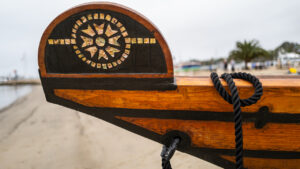
How did you learn about building tomols? What were your sources?
We had two or three sources. Everybody that’s trying to learn about Southern California Chumash and other tribes…they all use John Peabody Harrington. He was the most prolific anthropologist in California in his time, from 1900 to the 1950s. He interviewed and wrote down stories, language, how we made baskets. … His main source was Fernando Librado, who shared what he knew about stories, language, culture, hunting, gathering and the plank tomols. He made drawings and very detailed notes on how they were built.
Librado lived until about 1915. He built a tomol just to show how they were built in 1912…and it’s currently at the Santa Barbara Museum of Natural History.
Those of us that have built tomols since 1976, we’ve all used Fernando Librado’s notes and drawings.
You built your first one in 1997. How long did it take?
It took us six months of weekends.
Has it gotten easier?
[Laughs]. It still takes a long time.
Tell us about using tomols to get to the Channel Islands.
In 1976 for the bicentennial, the Santa Barbara Museum of Natural History built a plank tomol, Helek (falcon or hawk). A small group of Chumash people put it on a large support boat and took it to Santa Cruz Island. … They paddled around the islands, making small 4-6 mile journeys…[Helek] is now at the Santa Barbara Museum of Natural History.
In 1997, we built ’Elye’wun (swordfish) … On Sept. 8 of 2001, we left at 3:45 a.m. from Channel Islands Harbor. We paddled to Anacapa Island and then continued onto Santa Cruz Island. That crossing was the first time in over 150 years…that anyone had paddled from the mainland to the islands in a tomol.
How long did it take?
From Channel Islands Harbor to our final destination, which was Scorpion Rock on Santa Cruz Island, it took us a little over 11 hours. We’ve done it at least 10 more times since then.
What’s the journey like?
It’s extremely physically demanding. Our flat-bottom canoes are tippy, so we filled up bags with sand for ballast. … Kneeling on those sandbags (we put pads down; I wear volleyball pads on my knees) for two to three hours at a time, paddling. Our paddles are 10.5 to 11 feet long. Double blades, like a kayak paddle. We make the blades out of 2×8 redwood…Everyone follows the lead paddlers; all the blades hit the water, hopefully, at the same time. … You try and get into a rhythm — left, right, left, right — continuous for three hours. Then we’ll switch out paddlers. … It’s a 20-21 mile journey. In rough conditions, it can take 10 hours or more.
Thanks to people like you, the craft of tomol building is being preserved. How many people today would you estimate know how to build tomols?
Less than a hundred. There have been over 100 that have helped work on them — they help us sand, they glue a few boards together, do some staining. It’s probably less than a dozen that understand the concept. When we start construction on the Ventura ones, we’re gong to be diligent about making sure that the tribal members that are not woodworkers are still important. We want to document it with video and tons of photographs from the very first day to the very last day. Maybe even have a written journal. I’m 72 years old — I want to make sure our 20-30-year-old tribal members really know how to make a canoe. So we’re going to be meticulous in documenting it….There are some knowledgeable people, but it’s a small group that knows how to build tomols.
Are younger people interested in learning?
Yes. There’s been times that I’ve been a little concerned…but in the last 10-15 years, more of the younger people have been interested. …. Santa Ynez, Santa Barbara, Ventura — those are three separate communities…and they all have their canoe builders. And in six months, the Southern Chumash…which are Ventureño and Barbareño…I feel petty confident that we’ll have a good group of young Chumash people that are workers.
One thing we’ve lost — our craftsmen were highly skilled. That’s my hope with this project, is to bring back that pride and craftsmanship. You have to have it to build a tomol. You can’t do it half-assed.
How did the film Chumash Powered develop?
There’s a wonderful Chumash artist, she makes the most beautiful abalone jewelry. Patagonia wanted to do some stories on Chumash people. They heard about Leah Mata — she is brilliant. Patagonia did a story about Leah Mata and her jewelry. They asked her if she knew any Chumash people involved with canoes. And she said “yes — Alan Salazar.”
A representative from Patagonia contacted me and said he wanted to do a story for the magazine. Then it just kind of blossomed. … What was going to be a 1,000 word article in a magazine turned into an 8-minute documentary film.
In the beginning, Patagonia said, “How can we help the Chumash community?” And I said, “There are no traditional Chumash canoes in Ventura.”
We’ve always kept them in Santa Barbara, we do all our practices in Santa Barbara, we never come down to Ventura….in my 25 years of building tomols, we’ve brought a tomol to Ventura once. So the Ventura Chumash community has been left out of the picture.
So I said, “If you want to help the Ventura Chumash community, help us bring back our canoes.” When we start this Saturday, it will have been since the 1830s that a traditional Chumash tomol has been built in the Ventura area.
The Tataviam Land Conservancy Project is currently raising funds to build two tomols, which will bring members of the Fernandeño Tataviam and Chumash tribes together through educational events and workshops.
Fernandeño Tataviam Band of Mission Indians
Chumash Powered Screening
Thursday, June 15, at 7 p.m.
Q&A with Alan Salazar to follow
Patagonia Tin Shed
235 West Santa Clara Street, Ventura
805.643.6074
@patagonia
“Home to Limuw: A 50-Year Odyssey” by Alan Salazar as told to Jeff McElroy: www.patagonia.com/stories/home-to-limuw/story-133956.html.



